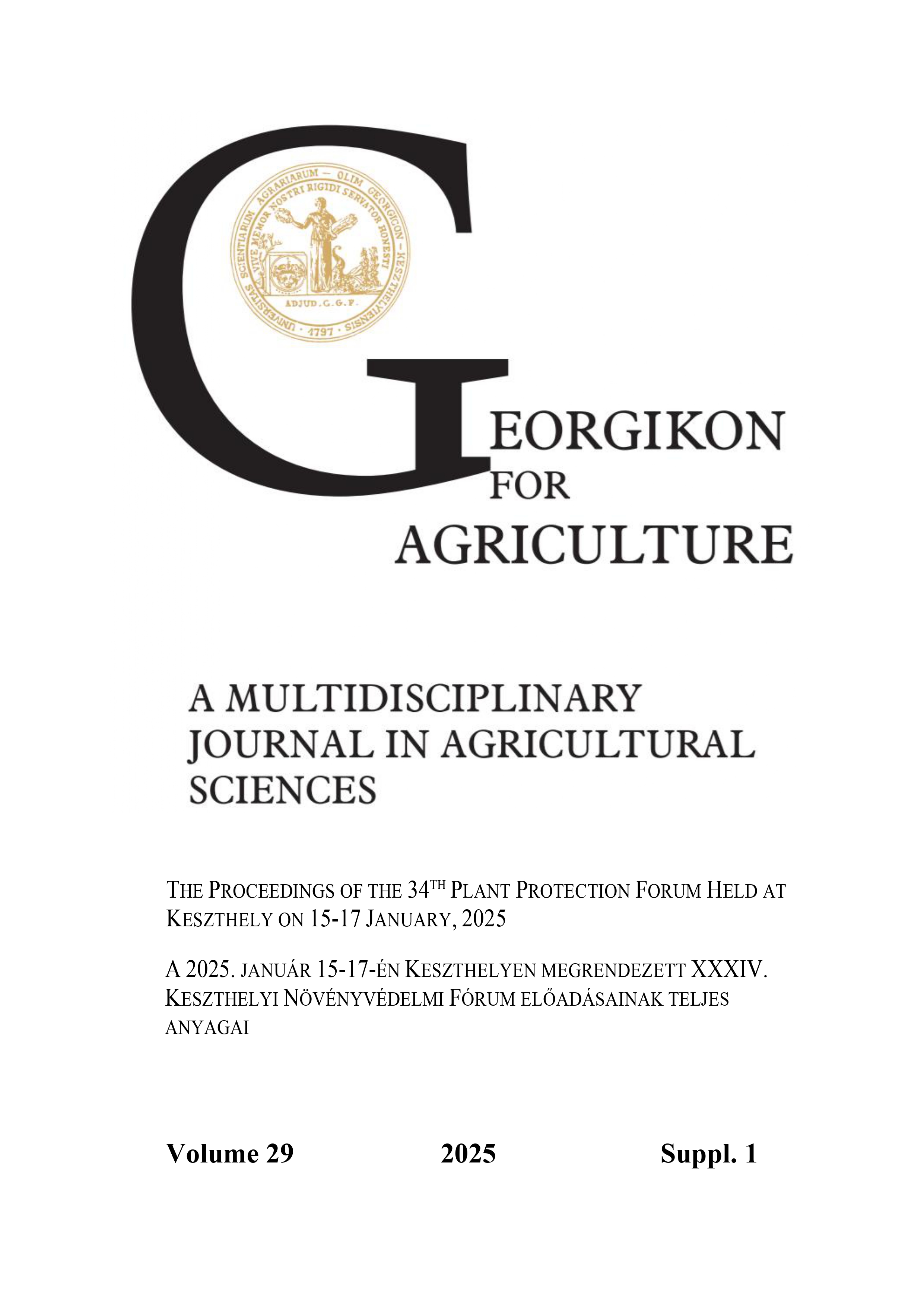Investigation on mulching weed control technologies of sweet potato (Ipomoea batatas)
DOI:
https://doi.org/10.70809/6562Keywords:
sweet potato, weed control, mulching, agrotextileAbstract
In our experiment, we investigated the weed control efficiency of organic mulches (wheat straw and grass cuttings) and agrotextile. The mulching materials reduced weed coverage and influenced the weed flora. However, their effectiveness significantly declined after approximately 4–6 weeks, necessitating supplementary weeding to prevent substantial yield losses. Agrotextile increased the yield by 43% (likely due to its effect on soil temperature and water management favorable for sweet potatoes), while organic mulches reduced the yield by 16–23%, even with supplementary weeding. In the weedy control, yield decreased by 97.2%. Agrotextile produced a marketable yield of 84.25 t/ha, whereas organic mulches resulted in 40.98–44.54 t/ha. Based on our results, agrotextile is the most recommended option for weed control in sweet potato, considering both the labor time required for weed management and the costs. Since agrotextile can be used for multiple years, its cost is not higher than straw mulch, and its environmental impact is lower compared to disposable plastic mulches.
References
Cirujdea, A., Aibar, J., Anzole, Á., Matín-Closas, M., Meco, R., Moreno, M. M., Pardo, A., Pelacho, A. M., Rojo, F., Royo-Esnal, A., Suso, M. L. and Zaradgoza, C. 2012. Biodegradable mulch instead of polyethylene for weed control of processing tomato production. Agronomy for Sustainable Development. 32 889–897. https://doi.org/10.1007/s13593-012-0084-y
Dezső, D. and Pásztor, Gy. 2022. A burgonya alternatív és herbicides gyomszabályozási technológiáinak vizsgálata. Georgikon for Agriculuture. 26 (1) 1–9.
Dezső, D. and Pásztor, Gy. 2024. A szabadföldi támrendszeres paradicsom integrált és alternatív növényvédelmi technológiáinak vizsgálata, Növényvédelem. 60 (1) 26–33.
INTERNET1: https://www.batatapalanta.hu/termesztesi-tudnivalok/ (2024.06.01.)
Kohut, Z. 2023. Édesburgonya: rossz talajokon is aranyat ér a szuperétel, Mezőhír https://mezohir.hu/2023/01/17/agrar-edesburgonya-batata-varaljailaszlo-mezogazdasag/ (2024.06.10.)
Miles, C., Wallace, R., Wszelaki, A., Martin, J., Cowan, J., Walters, T. and Inglis, D. 2012. Deterioration of Potentially Biodegradable Alternatives to Black Plastic Mulch in Three Tomato Production Regions. Horticulture Scince, 47 (9) 1270–1277. https://doi.org/10.21273/HORTSCI.47.9.1270
Pepó, P. 2022. Batáta (édesburgonya) in: Pepó P. (ed.) Integrált növénytermesztés. Alternatív növények. Debreceni Egyetem Kiadó, Debrecen. 199–196. pp.
Schonbeck, M. W. and Evanylo, G. K. 1998a. Effect of Mulches on Soil Properties and Tomato Production I. Soil Temprature, Soil Moisture and Marketable Yield. Journal of Sustainable Agriculture. 13 (1) 55–81. https://doi.org/10.1300/J064v13n01_06
Schonbeck, M. W. and Evanylo, G. K. 1998b. Effect of Mulches on Soil Properties and Tomato Production II. Plant Available Nitrogen, Organic Matter Input and Tilih-Related Properties. Journal of Sustainable Agriculture. 13 (1) 83–100. https://doi.org/10.1300/J064v13n01_07
Seem, J. E., Creamer N. G., Monks, D. W. 2003. Critical Weed-Free Period for ‘Beauregard’ Sweetpotato (Ipomoea batatas). Weed Technology. 17 (4) 686–695. https://doi.org/10.1614/WT02-089
Takácsné Hájos M. and Rubóczki T. 2019. Édesburgonya fajták és hazai termesztésük lehetőségei. Agrofórum 30 (1) 36–39.
Downloads
Published
Issue
Section
License
Copyright (c) 2025 Dezső Dániel, Szabó Rita, Pásztor György

This work is licensed under a Creative Commons Attribution-NonCommercial-NoDerivatives 4.0 International License.
Cikkre a Creative Commons 4.0 standard licenc alábbi típusa vonatkozik: CC-BY-NC-ND-4.0. Ennek értelmében a mű szabadon másolható, terjeszthető, bemutatható és előadható, azonban nem használható fel kereskedelmi célokra (NC), továbbá nem módosítható és nem készíthető belőle átdolgozás, származékos mű (ND). A licenc alapján a szerző vagy a jogosult által meghatározott módon fel kell tüntetni a szerző nevét és a szerzői mű címét (BY).




